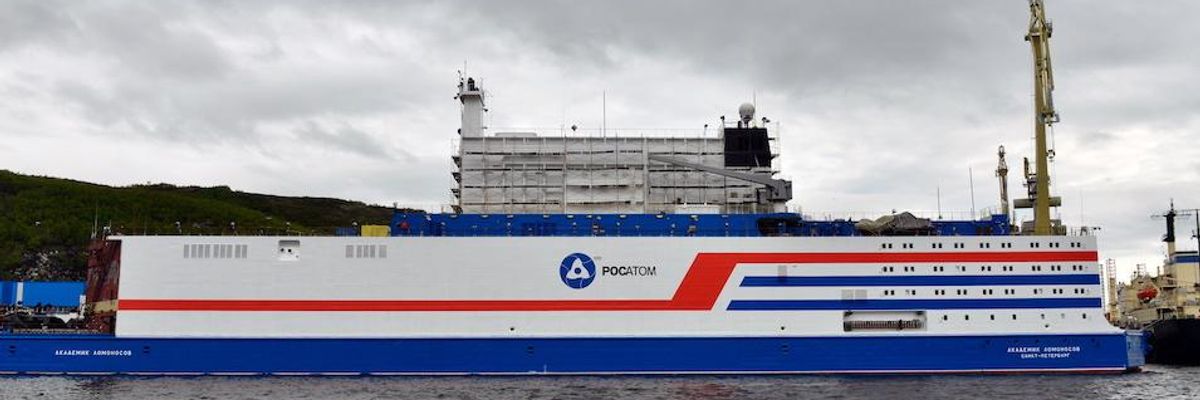Its official name is the "Akademik Lomonosov," but critics call it a "floating Chernobyl."
Whichever title you prefer, the floating barge nuclear plant is heading across the Arctic Circle. A project of the Russian government, the plant is headed to the far eastern town of Pevek on Russia's Arctic north coast to provide power to energy projects in the North Pole.
According to CNN:
The Admiral Lomonosov will be the northernmost operating nuclear plant in the world, and it's key to plans to develop the region economically. About 2 million Russians reside near the Arctic coast in villages and towns similar to Pevek, settlements that are often reachable only by plane or ship, if the weather permits. But they generate as much as 20 percent of country's GDP and are key for Russian plans to tap into the hidden Arctic riches of oil and gas as Siberian reserves diminish.
The Lomonosov has been the target of criticism from Greenpeace for years. The environmental group first coined the name "Chernobyl on ice."
But the company behind Lomonosov, Rosatom, takes exception at comparing its barge plant to the famed site of the world's worse domestic nuclear disaster.
"It's totally not justified to compare these two projects," the Lomonosov's chief engineer for environmental protection, Vladimir Iriminku, toldCNN. "These are baseless claims, just the way the reactors themselves operate work is different."
The barge's operators have learned from the disaster at Fukushima, Japan as well, they said.
"This rig can't be torn out of moorings, even with a 9-point tsunami, and we've even considered that if it does go inland, there is a backup system that can keep the reactor cooling for 24 hours without an electricity supply," said Lomonosov deputy director Dmitry Alekseenko.
Bellona, a nonprofit that observes nuclear projects and their environmental impacts, found in April that 24 hours could be insufficient time to avoid disaster if the rig was torn out of its moorings and landed somewhere where escape is difficult due to the polar environment.
In an interview with The Verge, Dale Klein, the former head of the Nuclear Regulatory Commission under President George W. Bush, called the plant's nickname a "scare tactic." However, Klein acknowledged that the potential for disaster from the Lomonosov could be catastrophic if something were to go wrong.
"If there were a problem out in the middle of the ocean, you would probably never see it on land," said Klein. "Or, you might be able to measure it, but it would be such a minimal impact [on land] because the ocean is so big. But if you have this barge that's anchored providing electricity 24 hours, seven days a week, and you had a spill, then it could get into the environment locally onshore."
"And so," said Klein, "you'd have to make sure that that never happens."

